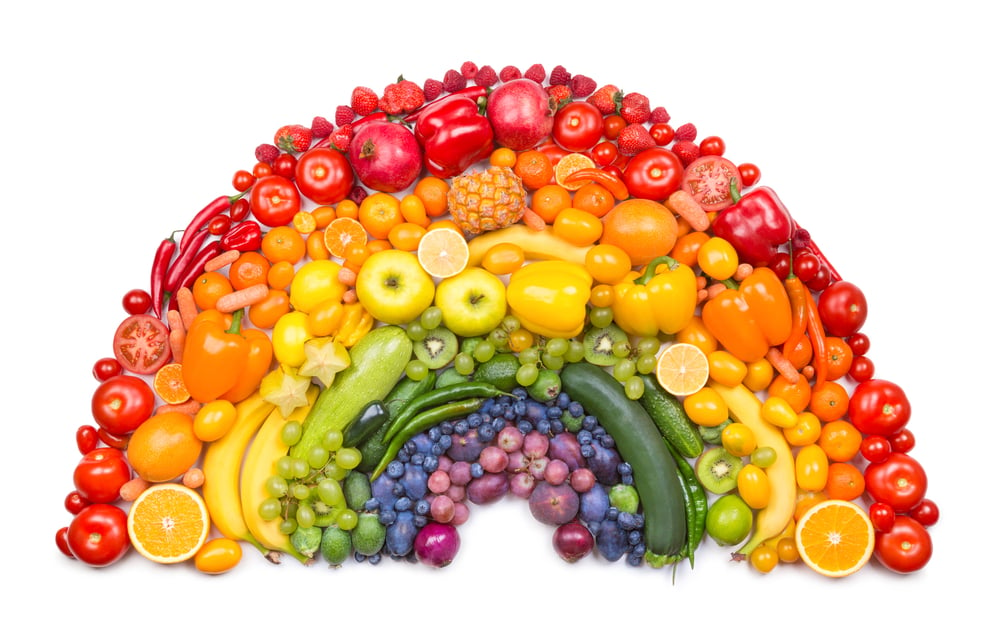
February 20, 2025
Eat the Rainbow! Why Colorful Meals are Healthier for You
SHARE
Want an easy way to be healthier? Add lots of colorful veggies and fruits to your diet.
The natural pigments that give fruits, vegetables, and other whole foods their bright colors are important micronutrients. Colorful foods are more nutritious and healthier for you. People who eat multi-colored meals reduce their risk of diabetes, stroke, heart attack, cancer, and other chronic diseases.
But before you start adding color to your plate, you need to know what nutrients the different colors correspond to.
- Yellow and Orange
Orange fruits and vegetables, like oranges, apricots, carrots, squash, and sweet potatoes get their color from carotenoids, which are important antioxidants. Some carotenoids, like beta-carotene, are converted to Vitamin A by the body.
Consuming significant portions of foods high in carotenoids reduces your risk of heart attack by 36% even if you have high cholesterol. So go ahead and fill up on nectarines and pumpkins!
- Red
Red fruits and vegetables contain the antioxidant lycopene. Antioxidants help prevent cell damage, which is why eating lots of tomatoes, beets, cranberries, strawberries, and red grapes can lower your risk of certain cancers.
- Green
Green is the color of life. Green fruits and vegetables get their color from chlorophyll. However, many of these green foods also contain other nutrients such as folate and lutein.
Folate deficiency, which is unsurprisingly really common, causes cardiovascular and digestive diseases. Lutein deficiency, on the other hand, is associated with poor vision.
If you haven’t been eating enough greens, start adding more broccoli, Brussels sprouts, asparagus, spinach and lettuce to your diet.
- Blue and Purple
Just like red fruits and vegetables, blue and purple produce gets its color from anthocyanins. Nutritional research has shown that anthocyanin pigments have the ability to protect against various diseases. These pigments have been linked to increased longevity, better cardiovascular health, cancer prevention, and better memory. If you want these health benefits, load up on blueberries, blackberries and eggplants.
- White
When we think of colorful meals, we rarely think of white fruits and vegetables. However, white produce contains anthoxanthins, which are important for eye health. White plant foods are also a good source of potassium, which is necessary for the proper functioning of your cells, tissues, and organs. So don’t forget to include bananas, mushrooms, parsnips, garlic and cauliflower in your diet.
Artificial Food Colors Don’t Count!
Natural plant pigments are the only ones that are nutritious and good for your health; artificial colors don’t count.
In fact, artificial food coloring has been linked to hyperactivity and behavioral problems in children, as well as food allergies. The long-term dangers are mostly unknown because there hasn’t been enough research in this area. Their consumption has, however, increased 500% in the last five decades.
Don’t risk it. Avoid artificial colors as much as you can and instead choose high nutrient, fruits, vegetables, and other whole foods.
